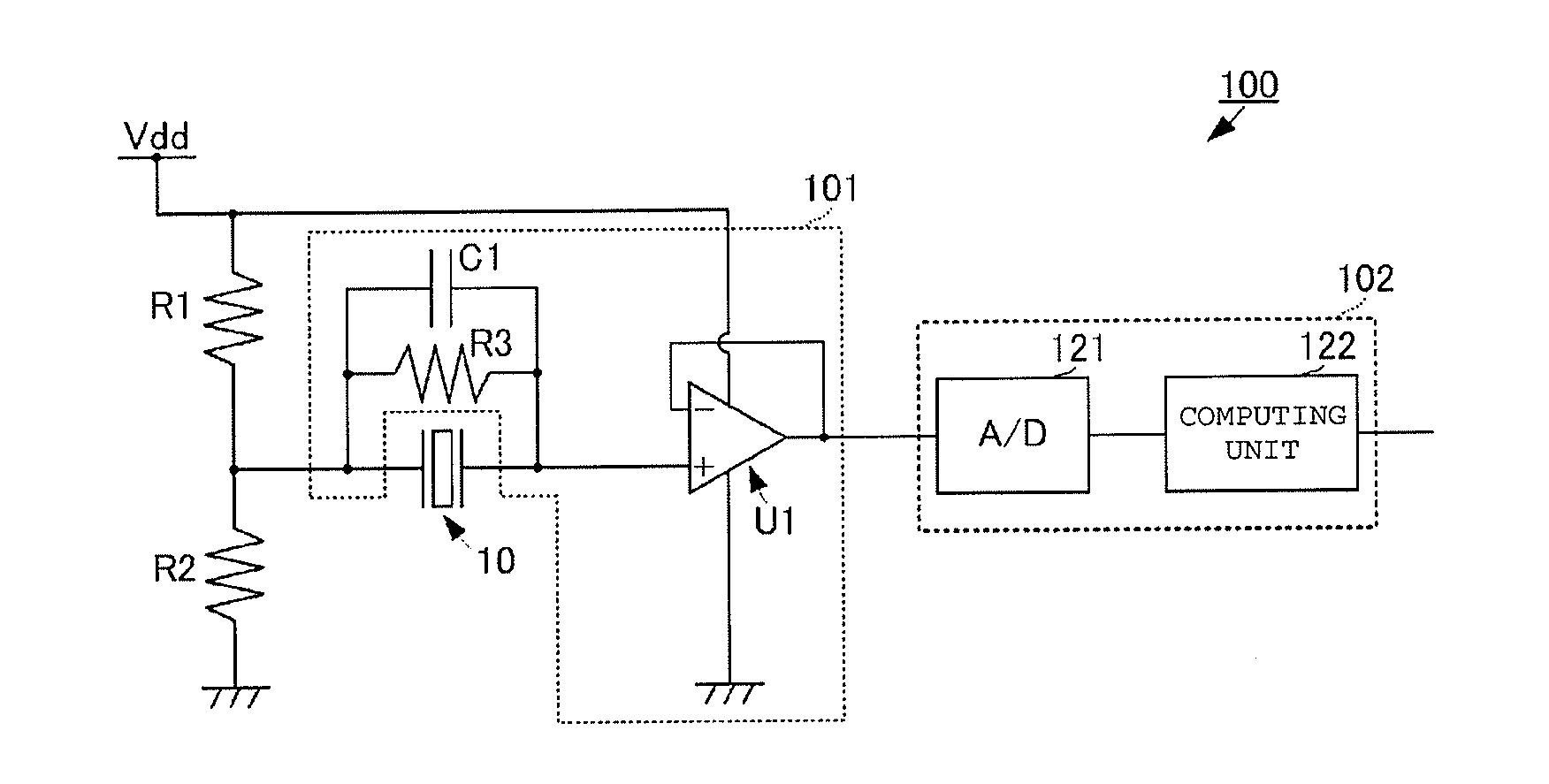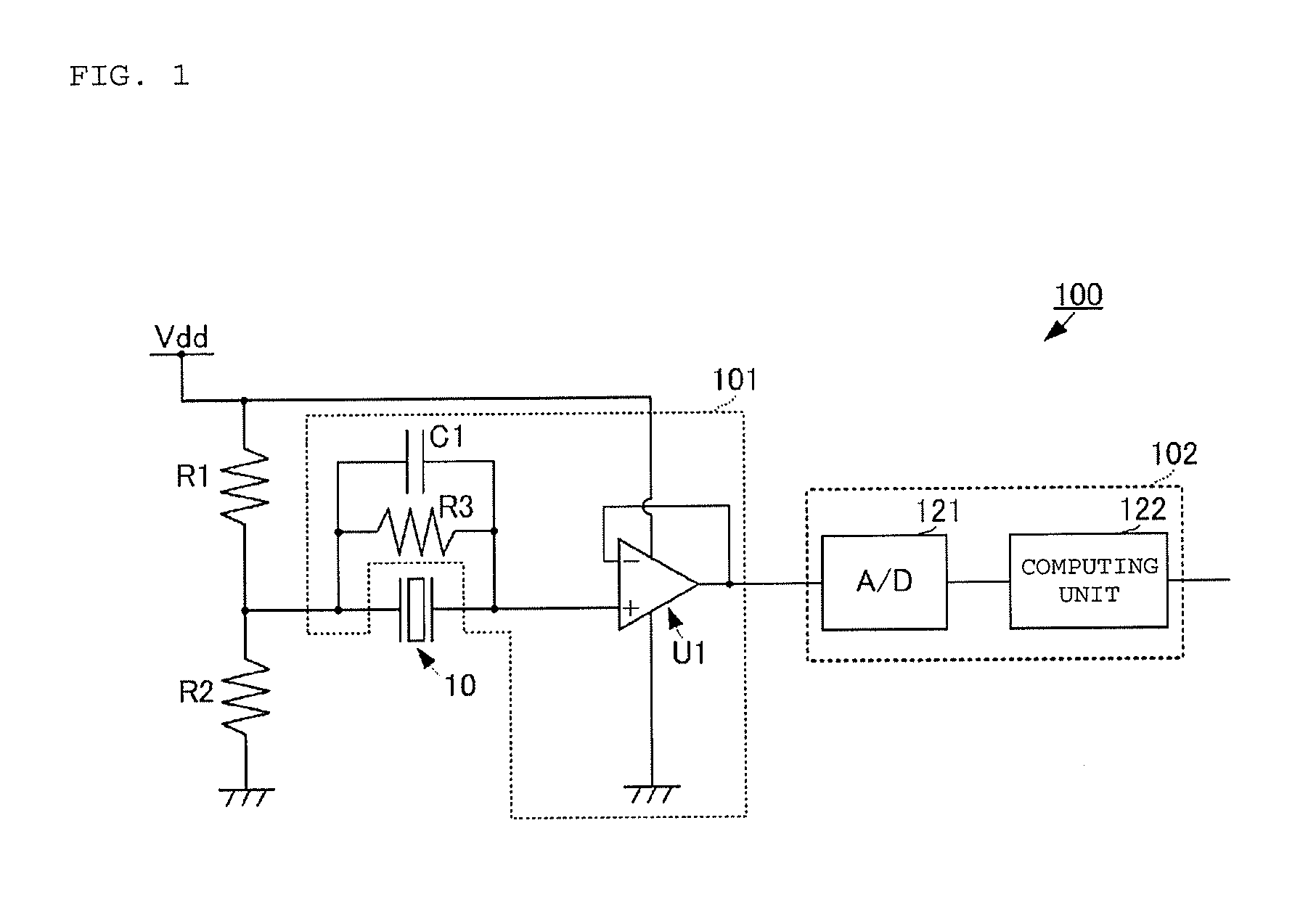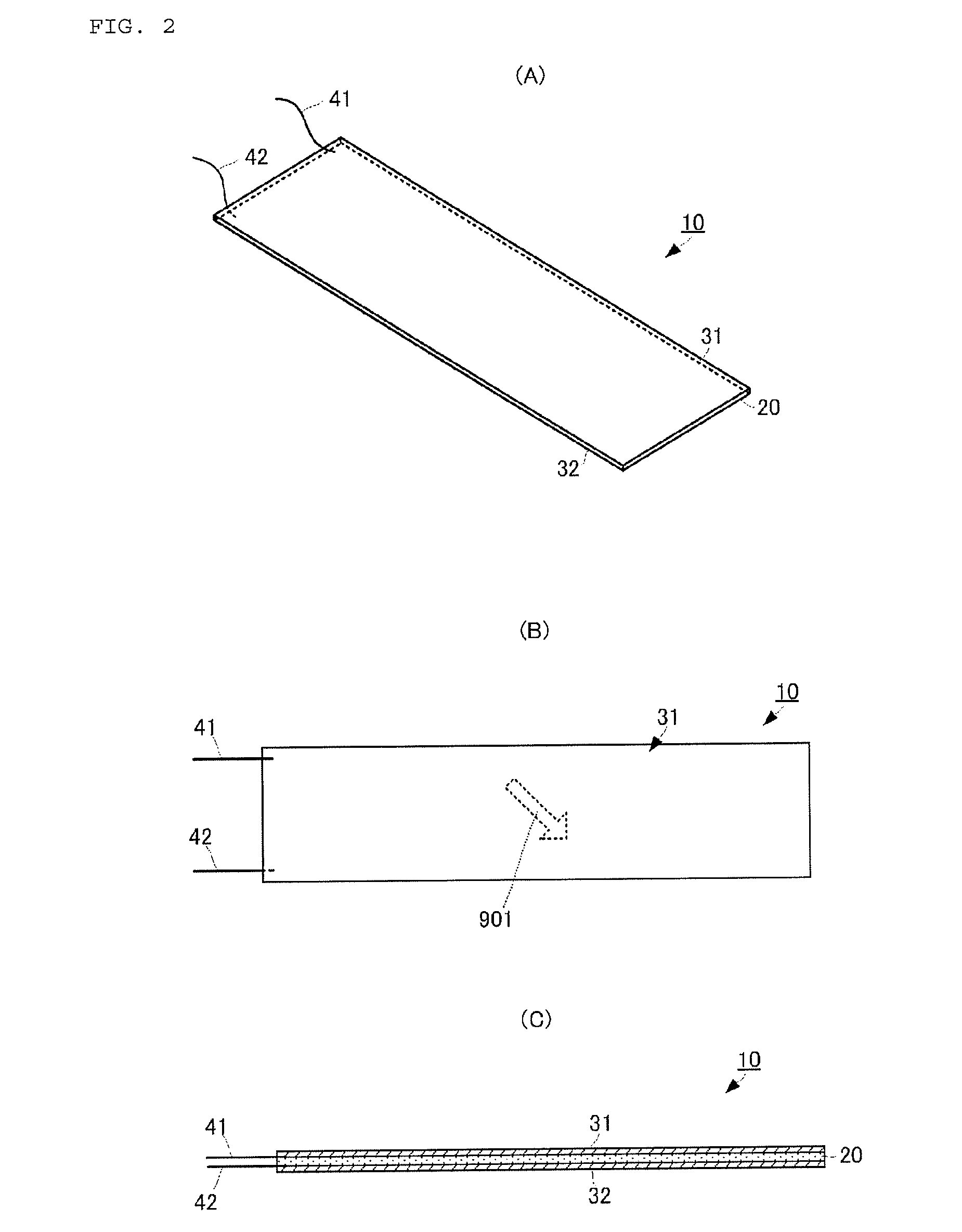Displacement sensor
a technology of displacement sensor and displacement sensor, which is applied in the direction of generator/motor, instrument, force/torque/work measurement apparatus, etc., can solve the problem of not being able to precisely detect (measure) the displacement proportional to the amount of charges generated
- Summary
- Abstract
- Description
- Claims
- Application Information
AI Technical Summary
Benefits of technology
Problems solved by technology
Method used
Image
Examples
first embodiment
[0050]When the flat surface of the piezoelectric element 10 is pushed, a charge is generated and a potential difference is produced between the first detection electrode 31 and the second detection electrode 32. FIGS. 3(A) and 3(B) each are a view for explaining a function of generating a charge when the piezoelectric element 10 is pushed according to the present invention. FIG. 3(A) illustrates a state where the amount of pushing (pressing force) is not applied, and FIG. 3(B) illustrates a state where the amount of pushing (pressing force) by the finger is applied.
[0051]As illustrated in FIG. 3(A), the piezoelectric element 10 is attached to one principal surface of a flat elastic body 50 such that respective flat surfaces are closely attached. The elastic body 50 is formed using glass, acryl or polycarbonate. The material of the elastic body 50 is not limited to the materials disclosed herein, and an adequate material only needs to be selected according to use conditions. Further,...
third embodiment
[0095]The reset function equipped pressing amount calculating unit 202A of the computing unit 122A calculates the amount of pressing using a flowchart illustrated in FIG. 12. FIG. 12 is a flowchart illustrating a pressing amount calculating flow executed by the reset function equipped pressing amount calculating unit 202A according to the
[0096]The reset function equipped pressing amount calculating unit 202A (simply referred to as the “calculating unit 202A” below) measures an integration value Zout outputted from the integrating unit 201, and sequentially compares the integration values Zout (S101). The calculating unit 202A continues measuring and comparing the integration values Zout until the calculating unit 202A detects that the integration value Zout fluctuates up and down (S102: NO). That is, as illustrated in FIG. 6, until the integration value Zout rises, takes a fixed value and then lowers, the calculating unit 202A continues measuring and comparing the integration values...
PUM
 Login to View More
Login to View More Abstract
Description
Claims
Application Information
 Login to View More
Login to View More - R&D
- Intellectual Property
- Life Sciences
- Materials
- Tech Scout
- Unparalleled Data Quality
- Higher Quality Content
- 60% Fewer Hallucinations
Browse by: Latest US Patents, China's latest patents, Technical Efficacy Thesaurus, Application Domain, Technology Topic, Popular Technical Reports.
© 2025 PatSnap. All rights reserved.Legal|Privacy policy|Modern Slavery Act Transparency Statement|Sitemap|About US| Contact US: help@patsnap.com



